Things To Do After Moving Into A New House
March 8, 2023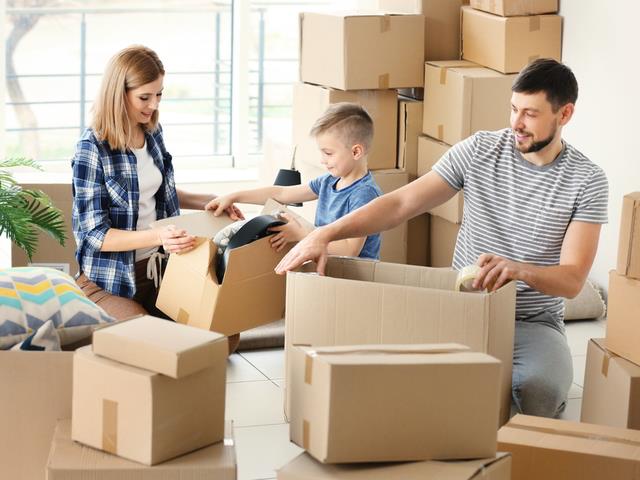
You successfully moved. Don’t open your champagne yet. It doesn’t mean there is nothing to do. When everything was moved to your new location, there were still a lot of things to do before you could relax completely. There are important things to do after moving.
Check Appliances if it is all working. Make sure nothing was broken or damaged. If there are items that got broke or damaged file a claim immediately before your insurance ends. Also important to check if your electricities are up and running.
Keep all your documents and receipt organized and safe in one folder. You need these documents to file a claim and you’re able to get your tax return.
Now that you’re already moved, it is the perfect time to decorate and arrange your house from scratch. It is a great opportunity to let your interior skills in you. Feel free to decorate your house the way you wanted.
Ask locals or search online what are the best school and possibly the nearest schools for your children. Register them as soon as possible so it will be easier for them to settle in and adapt to your new location.
Find your local precinct to “register to vote”. It is important for a new resident to update all pieces of information with your new address. Make sure to get updated and connected to your municipality.
Search for the nearest hospital to know who to call when an emergency occurs. This will speed up the process such as calamity hits.
Update your address to your online or offline subscription such as online shopping or local newspaper. You don’t want your orders to be sent to your old location.
Get insurance for your household, healthcare, and cars. Make sure you’ll get covered by the company policy at your new address.
Moving to a new house means you also need to register your cars at your current location. Go to the nearest local DMV office then transfer your driver’s license.
If you are completely unfamiliar with your location and environment, you need a bit of guidance from your neighbors. It will take time to familiarize a new state, new, city, and new neighborhood. Making new friends is an exciting part.
If you need peace of mind, provide for your pet’s needs. It is strange for pets to move to different locations due to territorial issues. Clean your house before they sniff pets trace who may live in your house before. (Also, Read: Traveling with Animals Dos and Donts )
Those are some important things to do after moving. Follow this plan and this checklist for a better and more organized transition.
Related Articles:
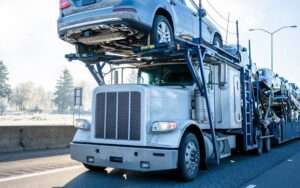

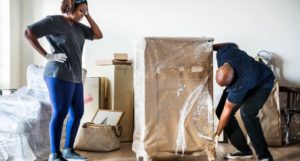



Checklist Before Moving Into a New House: Moving into your first apartment or simply moving into another condo or house? These fundamental things are critical to have before going through the first night in your new home. After the entirety of that unloading, envision not having the option to take a shower because you don’t have a shower window or curtain? Thus, we composed this helpful checklist to make your move-in as consistent as the remainder of your turn.
Moving into the kitchen there are a couple of things that you may have chosen to toss out or abandon while moving, however, that doesn’t make them any less important to have in your kitchen. Beyond dishware, silverware, and that costly arrangement of pots and skillet that you likely packed during your turn or move, possibly your last condo had a microwave previously installed and this new one doesn’t.
Set aside some effort to compose your kitchen and choose where the entirety of your apparatuses will go. Consider things like a dish rack, paper towel holder, and cutlery organizers as they might not have been packed. Tupperware and Ziploc bags ought to likewise be bought alongside any flavors and spices that may have been tossed out or abandoned to prepare your kitchen cooking at the very beginning.
Make a point to pack at any rate a couple of electrical extension wires on the off chance that those light attachments don’t come to the closest outlet. Ideally, during your packing procedure, you marked the entirety of your wires or stuffed them with the appliances they go into so you aren’t left with a case brimming with irregular or random wires.
It’s additionally a smart thought to pack a surge defender and protector or electrical extension for areas around TV consoles and personal computers where you’ll likely have numerous things that should be connected near one another. While an electrical extension just permits you to plug different things into one outlet, a surge protector or defender will ensure your gadgets in case of a power spike. It’s consistently a smart thought to get two or three packs of AAA and AA batteries for things like remotes and family unit appliances that may require them.
Regardless of whether you packed the entirety of your holders and hangers for your move, think about purchasing an additional set of holders. Things like plastic bins or vacuum storage bags are extraordinary in case you’re rationing or conserving space, as is generally the situation in condos.
These likewise make putting away those winter or summer garments when they’re unavailable a lot simpler. Ensure that you stuffed plastic containers that fit under your bed or inside your new storage rooms. This would likewise be an opportunity, particularly when scaling down if a storage unit would be helpful for your move.
Also Read: Basic Tips on How to Downsize into a Smaller House
The first thing on this rundown is a shower curtain with a liner. Possibly you as of now have an ornamental or funny shower curtain that you stuffed as a part of your turn or move; we’d at present advise that you replace the liner while moving into another spot or place.
Things like amplifying cosmetics mirrors may be significant in the event that you didn’t pack yours, during the move. Does your new residence have a bathroom tissue holder appended to the wall? In the event that it doesn’t snatch yourself a standing bathroom tissue holder and to adjust this piece of the housing stock up on tissue, toilet brush or scrubbing pads, and an unclogger.
Grab a disinfectant explicitly for washroom surfaces. On the off chance that you didn’t pack one it’s additionally critical to have medical aid or first aid kit in your new home because during the moving procedure and beyond accidents happen that may require purifying balm or disinfecting ointment, bandages, ace wraps, and bandages and some over the counter pain relievers.
While natural light is imperative to consider while thinking about another apartment or house, you would prefer not to be woken up at the beginning of the day. Does your new residence as of now have blinds on the windows? If not, think about your choices between blinds, draperies, and shades for the entirety of your windows. While blinds and window ornaments will allow in some light in any event, when shut, you should consider blackout draperies or shades for your room and something other than what’s expected in the front room and kitchen area.
Also, Read Moving Mistakes You Need To Avoid For Stress-Free Relocation
Window ornaments, curtains, and shades likewise give you more protection which ought to likewise be viewed when settling on this choice, particularly in case you’re moving from a house to a high-rise apartment. With regards to electrical lighting, check whether the overhead lights accompanied dimmer switches. These can be installed later, however when you simply move in begin contemplating where you can put any lights you may have packed with you during the move. Try to have a couple of extra bulbs concealed too, in the event of some unforeseen issue.
A basic toolbox incorporates a mallet or a hammer, a screwdriver set, a flexible wrench and pliers, nails, screws, and conceivably a drill. Having this close by will make the way toward hanging things on your dividers simpler. In case you’re leasing a loft, consider sticky hanging hooks instead of nails. Doing this will expand the chance of getting your whole security deposit back when you move out. Including a crate or box, the cutter will prove to be useful considering you may have many moving boxes to separate.
Living in a structure with a doorman is an unexpected circumstance in comparison to living in a house. On the off chance that you live in a high rise without a porter, think about changing one of the locks. The past tenants or their companions may have key duplicates, and landowners once in a while change locks. It’s sufficiently simple to unscrew your locks and replace them with new ones. In the event that you have to employ a locksmith, it isn’t as costly on the off chance that they are simply changing a lock.
Related Articles:

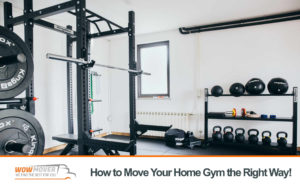


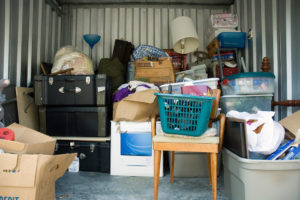
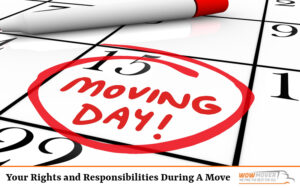
With the warm climate drawing closer, a significant number of us have to take additional consideration while working outside. In case you’re handling a move this mid-year, avoiding potential risk in the late spring heat is significant. To assist you with getting your turn and other open-air projects done securely this late spring, here are the top tips for remaining cool in the heat
DRESS PROPERLY
Wear baggy, lightly shaded attire and an overflowed cap in a breathable fabric. Apply sunscreen to any uncovered skin 20 minutes before you head out.
SECURE YOUR EYES
Shades aren’t only for looking cool. Ensure your glasses give UVA and UVB protection.

REMAIN HYDRATED
Try not to be reluctant to request water. In case you’re out in the heat without water, go into a close-by café or shop and request to top off your water bottle. Freezing a couple of water bottles the prior night will guarantee you have cool water convenient for the duration of the day. Bring these and bring along your ordinary unfrozen water bottle toward the beginning of the activity. Eat watermelon, cucumbers, celery, and green peppers are high water content.
MAKE AN ARRANGEMENT
Remember it’s normally coolest in the first part of the day, so attempt to plan the most arduous undertakings for prior in the day.
WATCH FOR SYMPTOMS
Know the indications of heat-related sicknesses and stop work immediately on the off chance that you feel overheated. To help chill yourself off, place cold packs behind your neck, and run your lower arms under virus water.
START THE DAY WELL HYDRATED
Drink a lot of water BEFORE you feel parched. Maintain a strategic distance from refreshments with additional caffeine or sugar, for example, caffeinated beverages and espresso, as they increment water misfortune and add to lack of hydration.
SLOW DOWN
Try not to anticipate top speeds in the hot climate. Plan for undertakings to take longer than expected, and for everybody in your group to take frequent breaks in the shade. After some time, your body will begin to adjust to the warmth, yet start off gradually and stir your way up.
Related Articles:
Why Moving Can be Beneficial for your Health and Soul
Moving Tip: How To Save The Planet While Moving
It’s estimated that one in every six Americans moves to another home every year and that the average American will move about 11.7 times throughout their lifetime. Given these insights, you’d imagine that the journey toward finding an expert moving company would be basic, simple, and peaceful. Isn’t that so? Wrong. Any individual who has made a major move before can disclose to you that finding the best moving companies is perhaps more distressing than doing it.
The thing is, except if you’re moving to another house down the road, you’ll most likely get truly worried in the event that you attempt to do everything yourself. So here are only a couple of fundamental tips to kick you off:
Essentially, being educated and realizing what’s in store from a moving company is the ideal approach to guarantee a smooth move. Conversing with trusted companions and neighbors is an incredible method to hear impartial audits of nearby companies, and posing whatever number of inquiries as would be prudent will guarantee that you don’t get hit with concealed charges in the wake of everything is gotten together and being moved.
Need Truck for moving?
The Best Moving Companies That Provides Trailer Rental
You don’t need to employ a full service moving company to limit your pressure. Numerous individuals decide to get together their things themselves (as a rule, sorting out boxes by rooms) and have a nearby moving company deal with the bigger things.
If you’re somebody who needs to have a “hands-on” contribution in the moving procedure so as to feel somewhat more agreeable, this may be a smart idea for you.
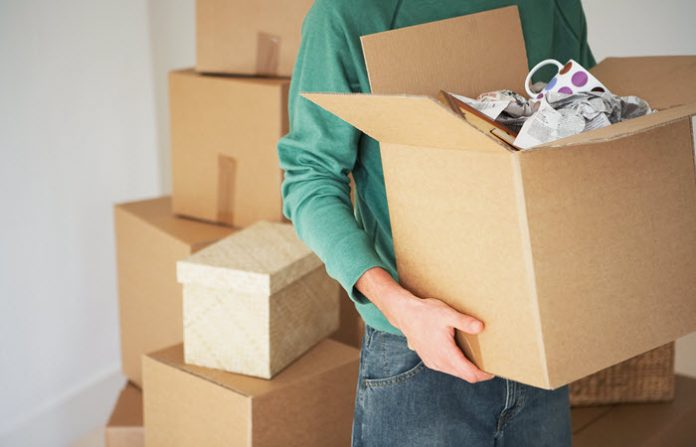
It’s imperative to get moving quotes from a couple of different moving companies, and these statements ought to be in-home evaluations, instead of online estimates. By indicating to your nearby movers how much physical stuff you’ll really need to move, you’re bound to get an exact estimate of the final expense.
In spite of the fact that companies are permitted to charge for these evaluations, a large percentage of them will offer an estimate for nothing out of pocket or free of charge. What’s more, something different you can request is a binding estimate — preferably, one that sets the most extreme cost for what the move will cost. With a binding estimate, an expert moving company isn’t legitimately permitted to charge more than what was agreed upon.
Policies are normally dictated by whether the move is occurring in-state or will be a multi-state move, so contrasts in pricing plans and insurance protection approaches are continually something to remember.
Finally, you need to look for a moving company that diminishes your feelings of anxiety, as opposed to adding to them. The best moving companies are frequently the ones that are fanatics for subtleties, and the ones that are totally legitimate for pretty much the entirety of their expenses and arrangements.

Related Articles:
Should You Hire Professional Packers For Your Next Move?
Why is it Very Important to Ask for A Moving Quotes
How To Protect Your Belongings When Moving Out: Moving day has finally come, and you are prepared and ready to move out. Kids are ready, pets are ready, and your most preferred interstate moving company has arrived. It feels like mayhem during the process, floors are broken, the sofa is damaged, and everything. To keep away from this happening again, here are some tips to avoid.
Prior to moving, make sure to clear out areas you might have to pass thru during the process. Consider not populating areas such as hallways, living rooms, and dining areas. Also, consider putting plastic or cardboard down to cover your floor to avoid cracking or to avoid tracking in mud.
Always measure entry points for large items such as sofa beds, bookshelves, and furniture. This is common sense, but just to make sure, you need to check your largest item if it fits to avoid delays on the actual moving day.
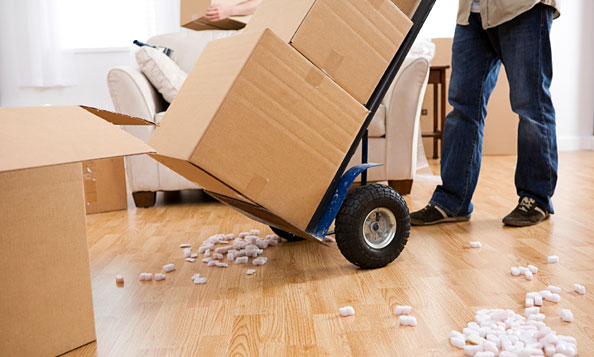
Related: Why You Should Hire a Moving Company
Table edges and corners are prone to damage. Protect them with cardboard, foam, or any packing materials to avoid any damage. Wrap your glass or any furniture with mirrors. Disassemble it if it is possible. This will ensure that it won’t cause damage to the item or to your wall from the accident.
Do not lift objects or items that require moving equipment. Ask a professional mover to do it for you. If you really want to help, make sure to get a moving dolly, handcart, Floor Slider to make the move easier. Much of this equipment can be provided by your moving company.
Following these tips will protect your property from any damage.
Here are companies that will help you move.
Xfinity Moving
College Hunk
Two Men and a Truck
All My Sons Moving and Storage
U-Haul
College Hunk
Portable On Demands
Budget Truck Rental
1-800-PACK-RAT
Penske
Best Interstate Moving + Storage
RELATED POST
Do your own basic, quick check of a mover’s credibility before paying a deposit. With our guide to checking the certifications of any operator and avoid serious difficulties with your move. Check movers and their licenses if you are availing their services.
Movers are intended to make moving less stressful, but they aren’t all made equal. Whether or not they claim to be a professional company will have a significant impact on your experience.
Make sure and check movers satisfy minimal standards such as insurance, safety, financial accountability, and regulatory compliance before booking them.
This quick assessment should only take you 10 minutes and will help you make an informed decision.
The US Department of Transportation (USDOT) requires all movers to be registered. Generally, movers will post their USDOT number on their website or supply it upon request. The Federal Motor Carrier Safety Administration issues these operating licenses in accordance with its regulations and legislation (FMCSA). You may look up their USDOT number using the FMCSA’s online search tool. The search will return information on the company’s registration status, fleet size, and compliance status. Confirm that they are “authorized for HHG” (household Goods) under the Safety Rating Data, indicating that their license is valid for residential movements.
In addition to a USDOT number, several states demand a state license. In New York State, check that your mover has the required permits, such as Authority to Transport Household Goods, from the New York State Department of Transportation Commissioner (NYSDOT).
On top of their USDOT registration, your mover will require an Interstate Operating Authority number. It is often known as a Motor Carrier Number (MC) if they are transporting cargo across state borders. On the FMCSA website, you can look up a mover’s qualifications by entering their MC number.
Your mover should have numerous types of insurance to safeguard their customers, their belongings, their movers, the facilities they work in, and their ability to issue Certificates of Insurance (COI), which are required in some cities.
There are two ways for protecting your items that are needed by Federal Law (FMSCA). The two options are: Full Value Protection (100 percent replacement of lost or damaged things) or Released Value Protection (the most cost-effective option, but the mover expects no more than 60 cents per pound for each object). Customers who chose Released Value Protection should still be able to obtain supplementary insurance from a third party for their purchases. Before signing, make sure you understand the various levels of coverage available. Double-check the weight of your products on your binding estimate, also known as your Bill of Lading.
In order to function and conduct business, your movers must have their own insurance. General Liability Insurance, Cargo Insurance, Workers Compensation Coverage, Commercial Auto Insurance, and Professional Liability Insurance are some of the standard plans that movers are obliged to hold. Umbrella and Excess Liability policies are optional coverages that go above and beyond standard auto and home insurance. Before allowing them inside, check your movers. Buildings in New York City will need them to have $5 million in Umbrella Insurance.
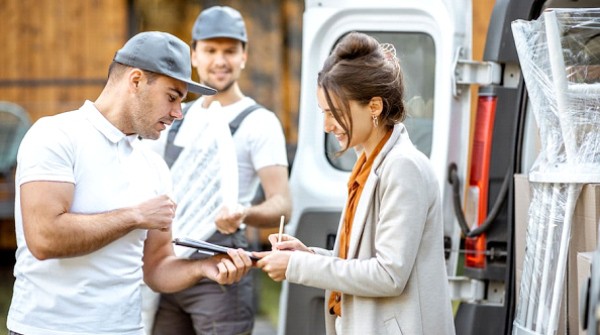
Licensed movers are always members of the industry’s leading trade associations, such as the American Moving and Storage Association (AMSA). AMSA conducts extensive background checks on movers and requires them to stay up to speed on the newest legislation and moving technologies. They also require them to participate in education and safety activities. It promotes nationally recognized, industry-wide standards for professional movers through its ProMover category. Inquire if your potential mover is a member of AMSA or another industry organization.
If you’re relocating internationally, make sure the mover is a member of a governing body like the FIDI Global Alliance. Depending on the sort of transportation, you should inquire whether they have a Federal Maritime Commission number or a Freight forwarder permit.
On their website, professional companies will display their compliance qualifications. Reliable movers have strong safety and transparency policy, and you can find information about their compliance on their websites.
Customers’ consumer footprints on websites like Yelp, Google, Thumbtack, and Trustpilot are required by industry requirements for movers. These websites should show that a mover engages with its client community on a frequent and relevant basis, offering moving guidance and support.
If the company you’re planning to book with has a poorly detailed website, doesn’t manage consumer platforms, you should be concerned about the scale of their operations. You should also check if they have a significant social media presence. While their quote may be less expensive than the rest, you may wind up with a costly headache later. This is due to issues such as liability for damage and lost or stolen property.






How do you do packing without bubble wrap? When it comes to packing fragile objects for relocation, the first thing that comes to mind is to use as much bubble wrap as possible to ensure that your breakables arrive in one piece? Bubble wrap provides the finest possible protection for any household items made of glass, porcelain, ceramic, wood, or another delicate material, and this is the appropriate thing to do.
In such situations, your primary aim should be to employ clever cost-cutting strategies that allow you to be as frugal as possible. Put another way, and you should only spend money on things you absolutely need.
You might choose not to use bubble wrap to cover the most fragile items in your home to save money on packing. When packing for a move, no more bubble wrap. Isn’t it too good to be true?
Right. It is, however, very achievable; simply continue reading to learn how to pack without bubble wrap.
First and foremost, the concept of not utilizing bubble wrap while packing sensitive objects may appear strange at first. After all, everyone is aware of the key benefits of utilizing bubble wrap when moving:
As you can see, using bubble wrap throughout the packing process has numerous undeniable benefits, particularly when transferring a big number of breakables. Packing most of your kitchen items, for example, may necessitate a considerable quantity of bubble wrap sheets to ensure that nothing is destroyed during transit.
However, you should be aware of a few drawbacks to using bubble wrap as a packing material before buying a few large rolls of plastic wrap.
Here are some reasons why packing your fragile products without bubble wrap might be a good idea:
Unfriendly to the environment. Because bubble wrap is constructed of plastic sheets, it is usually non-biodegradable. Simply put, after you’ve finished unpacking your belongings at your new house, you’ll need to be cautious about how you dispose of the remaining bubble wrap. Of course, eco-friendly bubble wrap (also known as green bubble wrap, Enviro bubble wrap, and so on) is available, but it is more expensive than normal bubble wrap.
Price. The cost of bubble wrap varies depending on where you get it. The cost is also influenced by the quantity, size, and manufacturer. You should buy biodegradable bubble wrap, which is more expensive in general if you want to reduce your environmental effect when moving.
Here are some price examples to give you an idea of how much bubble wrap costs in general:
If these rates appear to be reasonable, keep in mind that the sheer amount of bubble wrap you will require will put the most strain on your budget.
You’ll need bubble wrap to cover an incredible number of breakables in your kitchen alone, including plates, glasses, bowls, cups, porcelain mugs, forks, spoons, knives, and more. You’ll need bubble wrap to protect art, vases, mirrors, delicate furniture, and most types of electronic equipment when packing the remainder of your house (use anti-static bubble wrap for your electronics).
As a general guideline, any item that you consider to be fragile should be wrapped in air-filled plastic for further protection. This will almost certainly necessitate a large number of rolls or cartons of bubble wrap.
Related Article: How to Pack Blankets and Linens for Moving
Let’s talk about whether getting free bubble wrap for your packing needs is worth the time and effort before we provide you with the entire list of good bubble wrap substitutes, so you don’t have to pay money for the plastic packing material.
The only method to use bubble wrap while packing fragile objects without spending money on it is to get them for free. Yes, free bubble wrap can be found in the same way that free moving boxes can be found.
In reality, acquiring free bubble wrap is a win-win situation for you: you’ll be able to preserve your fragile products in the best possible way while also saving money. The only difficulty is that you’ll have to give up a lot of time and effort that you might not be willing to put in.
In actuality, there are a few options for getting free bubble wrap before you start packing your valuables:
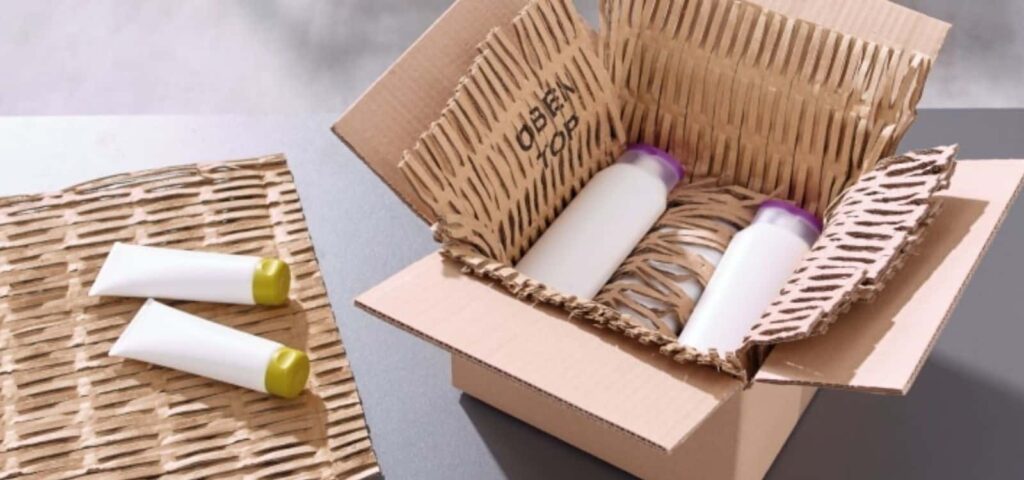
Keep in mind that getting free bubble wrap isn’t going to be easy. Furthermore, the time you spend looking for packing materials may be a luxury you can’t afford, especially if you only have a few days to prepare for your move.
When brand-new bubble wrap is out of your price range and getting free bubble wrap is too much of a nuisance, you’re left with only one viable option: packing your fragile products without it. However, because you still need to safeguard your breakables, you’ll need to find effective alternatives to bubble wrap that will allow you to preserve your belongings damage-free throughout the move.
Bubble wrap is thought to be the greatest option for wrapping paper.
White packing paper is soft enough to cushion fragile goods during a transfer. Wrapping paper effortlessly conforms to any shape and prevents dust and moisture from reaching the goods you want to protect.
Because of its soft padding effect, thick furniture covers provide exceptional protection for sensitive goods. However, because moving blankets are more expensive to buy and use during the packing process than bubble wrap, you should only use them to protect really fragile items that have personal value for you.
Towels, like blankets, are good padding materials and can be used as a replacement for bubble wrap.
Because there’s always the risk of ruining a towel or two throughout the house moving process, you don’t need to use brand-new yet unpacked towels that you’ve stored for years. However, you are free to wrap extra-fragile objects in your home’s worn but clean towels.
When you have a lot of old clothes and bed linens hanging around the house, you don’t need to spend a lot of money on bubble wrap.
The fact is, most of the clothing and bedsheets that you’re considering tossing out during the sorting process may be utilized as effective bubble wrap substitutes. There’s no point in throwing away possible packing materials until after the relocation is completed.
Kitchen glasses, especially those with super-fragile stems, can be protected with socks. Normally, such stemware would be bubble wrapped, but if you want to save money on packaging materials, simply place the glass objects inside thick, clean socks and move them to pre-padded boxes.
You will not be charged extra for old newspapers, but you should be careful how you use them throughout the packaging process to avoid ink stains. This is why you should only use newspapers as space fillers within moving boxes, not as protective layers that will come into contact with your valuables.
Recent Articles:






How to Pack Your Garage: The majority of us wait until the last minute to stuff our garage. After all, who wants to deal with the large, difficult-to-pack goods lurking in its corners, such as rakes and golf clubs? Or the ones that could be dangerous, such as pruning shears? Furthermore, dangerous products such as paint thinner, insecticides, and pool chemicals are frequently found in garages and must be appropriately disposed of.
Taking care of the garage early in the process, on the other hand, can make the remainder of your move go more smoothly. Here’s why you should start with the garage, as well as some packing advice.
Moving Soon?
Here are the best moving companies you can trust;
Xfinity Moving
College Hunk
Two Men and a Truck
All My Sons Moving and Storage
U-Haul
College Hunk
Portable On Demands
Budget Truck Rental
1-800-PACK-RAT
Penske
Best Interstate Moving + Storage
Go to the garage before you start boxing things up in the guest room or forming a Thrift store mound in the middle of the living room. The garage will likely require more time and work to pack because it is one of the largest and least structured spaces in your home. You’ll be fatigued and unprepared to meet the challenges if you wait until the final few days before your move to start packing.
Starting with the garage allows you to set up a staging area for the remainder of the house’s packing. Moving packing materials from room to room is no longer necessary. With an already crammed garage, you can set up a folding table with materials nearby and make heaps of goods to donate, sell, or toss out. Having a staging area in the garage helps to keep the chaos of moving out of the house to a minimum.
For the garage, you’ll need the same basic packing supplies as for the rest of the house. Because many of the goods in the garage are heavy and irregularly shaped, you may want to acquire a few specialty boxes as well as durable cardboard or plastic moving boxes for the job.
You’ll also need a lot of material to wrap sharp or breakable objects. Because objects stored in the garage can be unclean, oily, or contain chemicals, old towels and blankets are great. If you don’t have enough, Goodwill is a good place to look for inexpensive towels and blankets. Also, don’t skimp on packaging tape. Heavy boxes should be double and triple-sealed. You’ll need the following items:
Begin by dividing your garage into two sections, one for stuff you want to give and the other for stuff you want to sell. Then grab a trash bag and start working on one portion of your garage at a time. Throw damaged goods and rubbish in your garbage bag as you go, and donate or sell items in the proper categories.
Instead of thinking that whatever box you come across is ready to use, take the time to open it. It’s possible that you don’t need or desire the objects inside, or that they’re no longer usable. Rubber and plastic parts, for example, might become brittle and fractured over time. Anything you can get rid of now will save you time packing and unpacking afterward.
Deal with your heaps of goods to donate and sell as they grow so they don’t overwhelm you. You can donate stuff to Charity. You can advertise your stuff for sale online if you want to. You can also save the stuff for a pre-move thrift store.
If you’re planning a garage sale, get an early start by cleaning and price-tagging each item in the sell pile. After that, set aside a space for your garage sale things. If you’re going to store these items in boxes until the sale, make sure they’re properly marked as such and kept separate from the filled boxes you’ll be moving.
You’ll almost probably come across goods that aren’t permitted on moving trucks or storage while you declutter. Before you begin sorting and packing, spend a few minutes familiarizing yourself with the goods that your moving company does not allow. When you come upon an item that isn’t authorized, put it aside to dispose of later or transfer it by automobile if you’re going to your new residence.
Begin grouping comparable objects together once you’ve finished decluttering. To avoid injuries, wrap anything with sharp edges, such as shears or spades, in old towels or bubble wrap. Place these things, as well as any other hand tools, in a sturdy cardboard or plastic box. If you’re utilizing cardboard boxes, make sure the bottoms are tightly taped numerous times to avoid overcrowding.
Pack your power tools in their original packaging or carrying containers whenever possible. Strong cardboard or plastic box will suffice if not. Remove all detachable pieces, including the battery pack, and wrap the cable around their bodies before packing power tools. To avoid damage, wrap the box with bubble wrap or old towels, and fill any empty places with wadded packing paper for maximum safety.
Carry on with the items in your garage that are oddly shaped. Gardening and lawn equipment with long handles, such as rakes, brooms, and shovels, can be rolled in a moving blanket and tied together with string. Although sports equipment may require special crates, many odd-shaped objects, such as bicycles, can be placed directly into the truck. Even the lawnmower can be loaded once the gas and oil have been drained and the spark plug has been unplugged.
Set aside tools you’ll need for packing other sections of your home and unloading them at your new home as you pack the garage. Many of the needed things may be found in a small toolkit, but if you don’t have one, you’ll want to make your own using the list below as a reference. There are also some more essentials on the list that you should have on hand.
Related Articles:





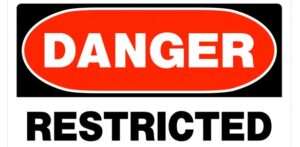
How Much Does It Cost to Move from California to Florida: If you’re searching for a change of pace and scenery, Florida may appear to be a more appealing option than living in California. An area with a lower unemployment rate signals a better working environment for job seekers, while residents can budget much more easily due to a cheaper cost of living.
The cost of living in Florida is in line with the national average, while the cost of living in California is consistently roughly 50% higher. Other amenities in both states are reasonably priced, except for housing. In both locations, grocery stores, utilities, and health care are all average.
The weather patterns and zones in California are significantly more diversified than what you’ll find in your new house. Florida’s climate is nearly solely humid subtropical, but California’s climate ranges from desert to alpine. A warm and moist winter follows the long, hot, and humid summers.
Every year, tourists swarm both California and Florida, and for good reason. Many of the state’s attractions include many national and state parks, Hollywood, and more than 800 miles of beaches.
Florida, for example, has almost 1,300 miles of coastline, including the beaches of the Gulf Coast and the Keys. The nightlife, fine dining, and culture of the cities are well-known, while the many theme parks and resorts are easily accessible for more family-friendly entertainment.
Florida and California are comparable in that they both have large immigrant populations that have affected their culture in significant ways. This is especially true in urban regions, which have a different temperament and mentality than rural places.
Both states are regarded as more laid-back resorts with a plethora of attractions for tourists. Long-term inhabitants, on the other hand, can make use of both. You should prepare for a much more heated election season than you’re used to in terms of politics. With a stark urban-rural divide, Florida is a battlefield state. This could have an impact on where you choose to reside, depending on your beliefs.
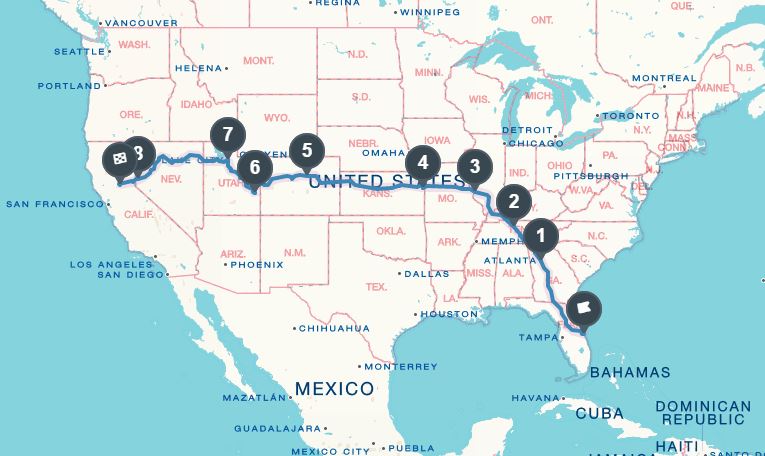
Related: Important Things to Know Moving to Orlando, Florida
You’ll be shifting between two prospering states when you move from California to Florida. Every year, Florida’s gross state product exceeds a trillion dollars. Trade and transportation are two of Florida’s most important industries, due to the high volume of local and international commerce that passes through its ports. In most areas of the state, they, together with healthcare, hospitality and tourism, and education, provide lots of job possibilities.
The cost of housing in Florida is substantially lower than in California. California’s housing costs are 139 percent higher than the national average, whereas the Sunshine State’s housing costs are only 2% higher than the national average.
The typical rent in Florida is $1,266, while the median cost of property is $235,913. When compared to California’s rent of $1,615 and homeownership of $589,890, this is a bargain. It is true that Florida’s median household income is $22,000 lower than that of the state of California, but the benefits of lower housing prices cannot be emphasized.
The following moving costs are based on a 3,000-mile journey from Sacramento, California, to Orlando, Florida.
The prices shown here are averages based on real-time data from our top moving companies. You should collect as many quotations as possible from as many movers as possible before making a booking with any moving company. You’ll be able to better assess your movers if you do this.
If you choose to do it yourself, a cross-country move will cost you roughly $1,500 on average. Of course, if you want to hire moving help at both ends, your charges will most certainly be higher.
1 BR Cost | 2 BR Cost | 3 BR Cost | 4 BR Cost | |
| Full-Service Move | $5,100 | $6,000 | $8,750 | $11,250 |
| Moving Container | $2,150 | $3,300 | $3,650 | $4,971 |
Your relocation costs are influenced by a variety of factors. The following are a few of the most important ones to keep in mind as you plan your trip.
Add-on services, such as packing, vehicle shipment, or custom crating, can significantly increase the cost of your relocation. These should be taken into account early on in the moving process when determining your budget.
Related Articles:






Everyone understands that there is a lot of difficult part of DIY moving and if you can’t handle it, you’ll end up in a big mess. As a result, you’ll need to plan months, if not a year, ahead of time. Still, nothing can stop you from having a stress-free moving experience if you do it right. WowMover Moving and Storage can assist you if you change your mind about the DIY move. Not only do we provide a stress-free move, but we also provide a cost-effective transfer. Nonetheless, let’s look at the most difficult part of DIY moving.
Finally, we’ve covered practically all of the difficult aspects of moving on your own. Now that you’ve learned about them, it’s time to decide what to do next. We strongly urge you to make a choice depending on your time and financial constraints. Remember to keep a budget in your brain at all times because you don’t want to run into debt as a result of your relocation. Anyway, if you’re planning to relocate alone, see if renting a U-Haul Van can save you money. You’ll be able to move safely and without difficulty in this manner. Anyway, best of luck with your relocation and don’t hesitate to contact us if you require any assistance. We’re only a phone call away.
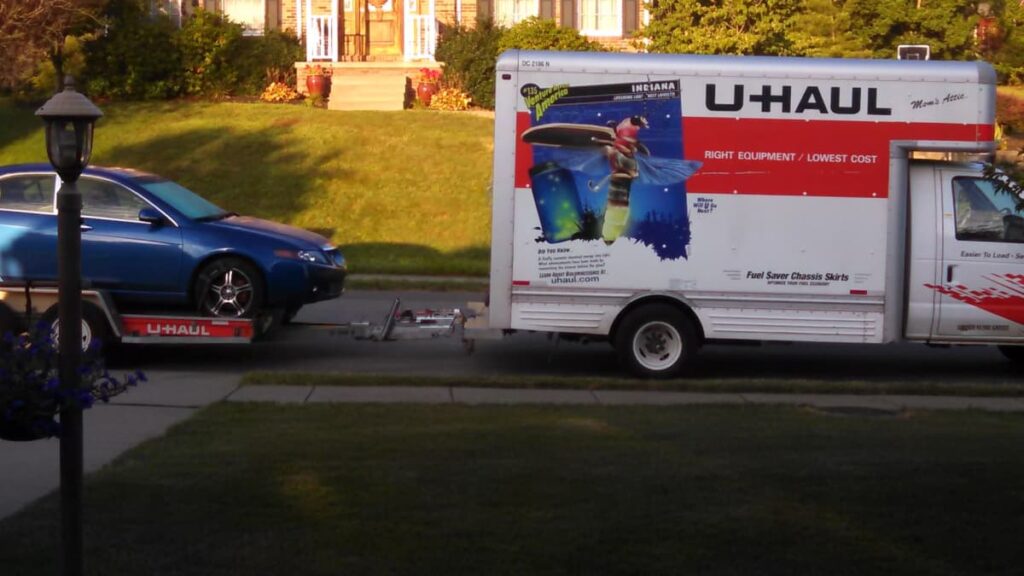
As you can see, there are numerous ways to make your relocation less stressful. However, hiring professionals is the best and safest method to go about it. You’ll not only avoid all of the potentially dangerous aspects of any DIY project, but you’ll also save time, energy, and money in the long run. As a result, contact us right away to begin your stress-free moving experience.
If you’re still not convinced, consider this: moving on your own may cause you more stress than moving with a professional. All you need to do to have a stress-free experience is contact movers who have prior experience. However, if you believe that moving on your own is still the best option, we are here to help. Just remember to get started on time.
As you can see, we’ve only touched on a handful of the many difficulties that come with moving on your own. Although it may appear that moving on your own is a wonderful choice, it isn’t in most cases. As a result, you should carefully consider whether you should relocate on your own or with the assistance of specialists. Even yet, you can hire pros without entrusting them with everything. Simply determine what you’ll require assistance with. You may, for example, ask for assistance if you need to put your items somewhere.
Here are the most challenging parts of a DIY move:
To continue, you should be aware that there is some difficult part of DIY moving. That is to say, you should not jeopardize your health to save money on the move. If you want to make your DIY move as stress-free as possible, there are a few things you should know and avoid.
We’ll try to explain why certain aspects of your DIY relocation are difficult and why it’s best to leave it to a professional. These are the items:
Related: How to DIY, Reuse or Make Money Recycling Moving Boxes
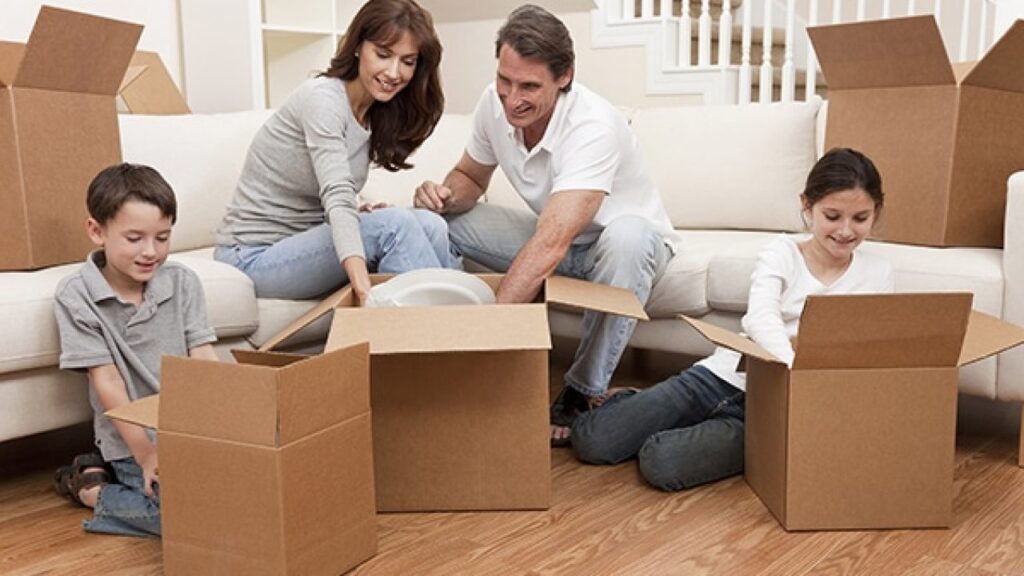
Despite the fact that there are less expensive and easier alternatives to relocate, hiring movers will save you time and money in the long run. Nonetheless, we should explain how to move without the assistance of others. The following is what you should do to avoid the difficult part of DIY moving:
To begin with, there are numerous considerations to make if you decide to relocate on your own. You will, for example, have more on your mind than someone who has hired professional movers. We won’t try to persuade you to hire specialists, but it would be beneficial to hear our arguments. To begin with, movers are usually the safest and most dependable option (if you relocate with professionals and not fraudulent companies). The most common concern, tho, is the entire cost of migration. Believe it or not, most people save money by hiring pros rather than doing it themselves.
Related Articles:





